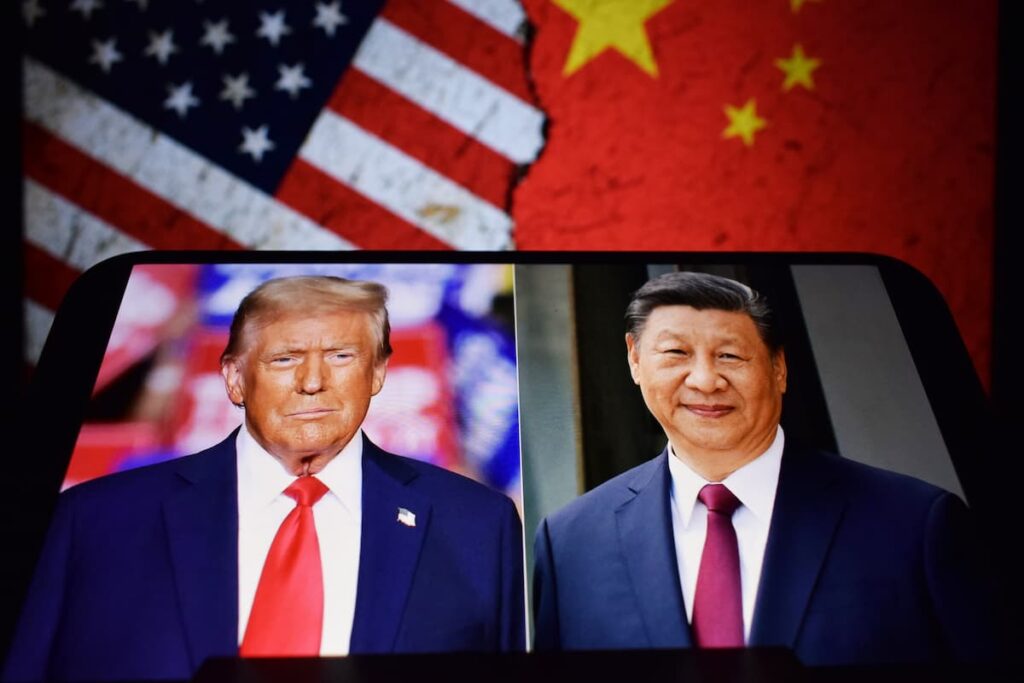A Fragile Truce Under Pressure
Trade tensions between the United States and China are back in the spotlight after a recent agreement between the two nations began to show signs of strain. The truce, established after high-level talks in Geneva, aimed to reduce years of tit-for-tat tariff escalations that had disrupted global markets and supply chains. Both countries agreed to ease reciprocal tariffs and suspend others temporarily, offering a much-needed pause in the trade war.
The United States lowered its tariffs on Chinese goods from a staggering 145% down to 30%, while China reduced its retaliatory tariffs from 125% to 10%. The move was widely seen as a mutual effort to stabilize trade relations and encourage further negotiations between the world’s two largest economies. However, optimism quickly faded as new disputes surfaced.
While the US side claims it has fulfilled its part of the agreement, concerns have been raised over China’s implementation. According to US trade officials, certain non-tariff barriers and countermeasures—such as export restrictions and blacklists targeting US companies—remain in place despite the recent truce. These unresolved issues have led to rising tensions and growing frustration within Washington.
A Deal Undermined by Hidden Barriers
Although both nations agreed to reduce official tariffs, the broader picture reveals a more complex reality. The US argues that China’s compliance is incomplete, specifically pointing to measures that go beyond tariffs. For example, American firms still face limitations when exporting critical materials and technologies, such as rare earth magnets essential for the automotive and semiconductor industries.
These barriers, the US contends, are effectively undermining the spirit of the agreement. By maintaining certain restrictions while selectively removing others, China is perceived as delaying or minimizing the impact of the concessions it committed to. Trade officials have stated that these actions are not only slowing down progress but also threatening to undo the fragile trust built during the latest round of negotiations.
Beijing, meanwhile, has deflected the accusations and criticized the US for maintaining and expanding its own set of restrictions. These include tightening export controls on semiconductor technologies and related materials, a move that has angered Chinese officials. From China’s perspective, such actions represent a continued pattern of discrimination that contradicts the spirit of cooperation.
Political Overtones and Domestic Impacts
The escalating tension has significant implications not just for international trade, but also for domestic politics in both countries. In the US, the trade dispute has long been framed as part of a broader strategy to revive American manufacturing and reduce reliance on foreign goods. Tariffs have been used as leverage to secure more favorable terms and encourage consumers to support domestic industries.
However, this strategy has also faced legal and political challenges. A recent court ruling questioned the legal authority under which certain tariffs were imposed, creating uncertainty around the sustainability of the current trade regime. Although the White House has temporarily halted the effects of this decision through an appeal, the situation remains unresolved and could affect the administration’s approach moving forward.
The US government has also taken steps beyond trade policy, such as revoking visas of Chinese students and academics. These actions are part of a broader effort to restrict China’s access to American innovation and talent, but they also risk further straining diplomatic relations.
On the Chinese side, frustration is mounting over what it sees as unfair and politically motivated restrictions. While maintaining open lines of communication, Chinese officials have repeatedly called for the US to correct what they describe as erroneous actions, signaling that patience may be wearing thin.
Uncertain Path Ahead for Global Trade
Despite the tensions, both governments have expressed interest in continuing dialogue. US officials have acknowledged that the complexity of the trade relationship requires ongoing high-level engagement and a willingness to address deep-rooted issues. Negotiators remain in contact, and there are hopes that further conversations between leaders could help reset the tone.
Still, the road ahead is unclear. With economic pressures mounting at home and political stakes rising, both sides may find it difficult to reach the level of cooperation needed for a lasting solution. As talks continue, global markets are closely watching the outcome, knowing that even minor disruptions in this trade relationship can have far-reaching consequences.
For now, the truce that once offered a glimpse of relief seems increasingly fragile—its survival hinging on mutual accountability, strategic patience, and a shared willingness to compromise.



